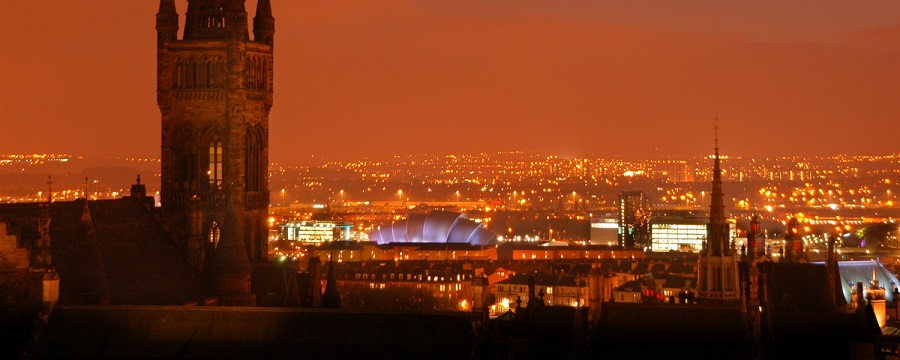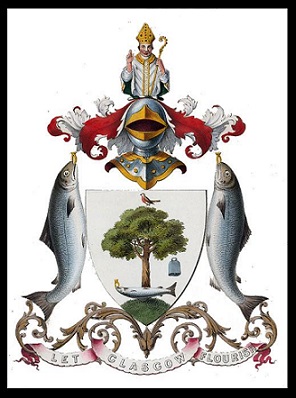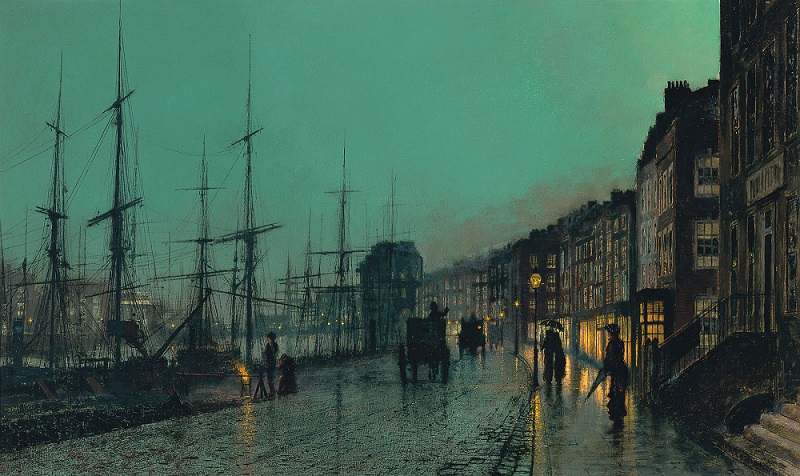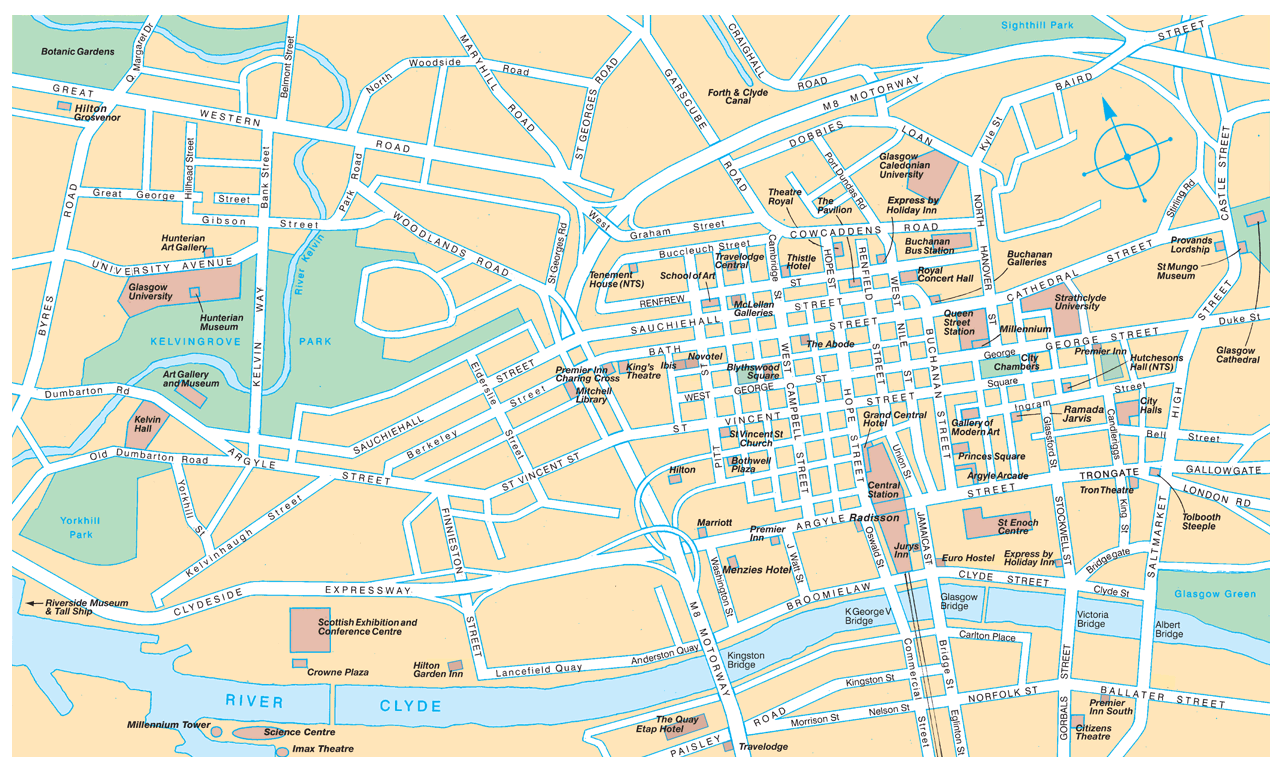Glasgow
- British Isles -x- Scotland -x- London
Quote
Appearance
City Device
Climate
Overall, Glasgow is significantly colder than Denver. Record highs in the summer are less than 90F (31C). Average Night-time temperatures range from slightly above freezing in the winter to just above 10C (50F), but freezing is possible almost the entire year, and hard freezes occur yearly, even with global warming pushing temperatures up. The city receives about 50 inches of water a year, which tends to come in the form of increasingly violent winter storms.
Economy
Geography
City Centre
Glasgow city centre is the central business district of Glasgow, Scotland. Is bounded by the High Street to the east, the River Clyde to the south and the M8 motorway to the west and north which was built through the Townhead, Charing Cross, Cowcaddens and Anderston areas in the 1960s. It can roughly be divided into at least 3 different districts.
Retail and theatre district
The city centre is based on a grid system of streets, similar to that of Barcelona or American cities, on the north bank of the River Clyde. The heart of the city is George Square, site of many of Glasgow's public statues and the elaborate Victorian Glasgow City Chambers, headquarters of Glasgow City Council. To the south and west are the shopping precincts of Argyle Street, Sauchiehall Street and Buchanan Street, the latter featuring more upmarket retailers and winner of the Academy of Urbanism 'Great Street Award' 2008. The main shopping centres are Buchanan Galleries and the St. Enoch Centre, with the up-market Princes Square and the Italian Centre specializing in designer labels. The London-based department store Selfridges has purchased a potential development site in the city and another upmarket retail chain Harvey Nichols is also thought to be planning a store in the city, further strengthening Glasgow's retail portfolio, which forms the U.K.'s second largest and most economically important retail sector after Central London.
The city centre is home to most of Glasgow's main cultural venues: The Theatre Royal (home of Scottish Opera and formerly Scottish Ballet (which now resides in The Tramway Theatre), The Pavilion, The King's Theatre, Glasgow Royal Concert Hall, Glasgow Film Theatre, Gallery of Modern Art (GoMA), Mitchell Library, the Centre for Contemporary Arts, McLellan Galleries and The Lighthouse Museum of Architecture, Design and the City. The world's tallest cinema, the eighteen-screen Cineworld, is situated on Renfrew Street. The city centre is also home to four of Glasgow's higher education institutions: The University of Strathclyde, The Royal Scottish Academy of Music and Drama, Glasgow School of Art and Glasgow Caledonian University.
Merchant City
To the east is the commercial and residential district of Merchant City. The Merchant City was formerly the residential district of the wealthy city merchants in the 18th and early 19th centuries, particularly the Tobacco Lords from whom many of the streets take their name. As the Industrial Revolution and the wealth it brought to the city resulted in the expansion of Glasgow's central area westward, the original medieval centre was left behind. Glasgow Cross, situated at the junction of High Street, Gallowgate, Trongate and Saltmarket was the original centre of the city, symbolized by its Mercat cross. Glasgow Cross encompasses the Tolbooth Clock Tower; all that remains of the original City Chambers, which was destroyed by fire in 1926. Moving northward up High Street towards Rottenrow and Townhead lies the 15th century Glasgow Cathedral and the Provand's Lordship. Due to growing industrial pollution levels in the mid to late 19th century, the area fell out of favor with residents.
From the late 1980s onwards, the Merchant City has been rejuvenated with luxury city centre apartments and warehouse conversions. This regeneration has supported an increasing number of cafés and restaurants. The area is also home to a number of high end boutique style shops and some of Glasgow's most upmarket stores.
The Merchant City is the centre of Glasgow's growing 'cultural quarter', based on King Street, the Saltmarket and Trongate, and at the heart of the annual Merchant City Festival. The area has supported a huge growth in art galleries, the origins of which can be found in the late 80s when it attracted artist-led organizations that could afford the cheap rents required to operate in vacant manufacturing or retail spaces. The artistic and cultural potential of the Merchant City as a 'cultural quarter' was harnessed by independent arts organizations and Glasgow City Council, and the recent development of Trongate 103, which houses galleries, workshops, artist studios and production spaces, is considered a major outcome of the continued partnership between both. The area also contains a number of theatres and concert venues, including the Tron Theatre, the Old Fruitmarket, the Trades Hall, St Andrew's in the Square, Merchant Square, and the City Halls.
A large part of Glasgow's LGBT scene is located within the Merchant City. This includes many clubs, and the UK gay chain store Clone Zone, along with a couple of saunas. Recently the city council defined (and perhaps expanded) the area known as Merchant City as far west as Buchanan Street, marking these boundaries with new, highly stylized metal signage.
The Financial District
To the western edge of the city centre, occupying the areas of Blythswood Hill and Anderston, lies Glasgow's financial district, known officially as the International Financial Services District (IFSD), although often irreverently nicknamed by the contemporary press as the "square kilometre" or "Wall Street on Clyde". Since the late 1980s the construction of many modern office blocks and high rise developments have paved the way for the IFSD to become one of the UKs largest financial quarters. With a reputation as an established financial services centre, coupled with comprehensive support services, Glasgow continues to attract and grow new business. Of the 10 largest general insurance companies in the UK, 8 have a base or head office in Glasgow - including Direct Line, Esure, AXA and Norwich Union. Key banking sector companies have also relocated some of their services to commercial property in Glasgow - Resolution, JPMorgan Chase, Abbey, HBOS, Barclays Wealth, Tesco Personal Finance, Morgan Stanley, Lloyds TSB, Clydesdale Bank, BNP Paribas, HSBC and the Royal Bank of Scotland. The Ministry of Defence have several departments and Clydeport, the Glasgow Stock Exchange, Student Loans Company, Scottish Executive Enterprise, Transport and Lifelong Learning Department, BT Group, Scottish Qualifications Authority and Scottish Enterprise also have their headquarters based in the district.
West End
Glasgow's West End is a bohemian district of cafés, tea rooms, bars, boutiques, upmarket hotels, clubs and restaurants in the hinterland of Kelvingrove Park, the University of Glasgow, Glasgow Botanic Gardens and the Scottish Exhibition and Conference Centre, focused especially on the area's main thoroughfare, Byres Road. The area is popular with tourists, and contains many hotels, including the prestigious One Devonshire Gardens, which has accommodated a number of celebrity guests on visits to the city.
The West End includes residential areas of Hillhead, Dowanhill, Kelvingrove, Kelvinside, Hyndland and, to an increasing extent, Partick. The name is also increasingly being used to refer to any area to the west of Charing Cross. This includes areas such as Scotstoun, Jordanhill, Kelvindale and Anniesland.
The West End is bisected by the River Kelvin which flows from the Campsie Fells in the north and confluences with the River Clyde at Yorkhill Quay.
The spire of Sir George Gilbert Scott's Glasgow University main building (the second largest Gothic Revival building in Britain) is a major landmark, and can be seen from miles around, sitting atop Gilmorehill. The university itself is the fourth oldest in the English-speaking world. Much of the city's student population is based in the West End, adding to its cultural vibrancy.
The area is also home to the Kelvingrove Art Gallery and Museum, Hunterian Museum and Art Gallery, Kelvin Hall International Sports Arena and the Henry Wood Hall (home of the Royal Scottish National Orchestra although they generally perform at the Glasgow Royal Concert Hall). Adjacent to the Kelvin Hall was the Museum of Transport, which reopened in 2010 after moving to a new location on a former dockland site at Glasgow Harbour where the River Kelvin flows into the Clyde. The new building is built to a design by Zaha Hadid. The West End Festival, one of Glasgow's largest festivals, is held annually in June.
Glasgow is the home of the SECC, the United Kingdom's largest exhibition and conference centre. A major expansion of the SECC facilities at the former Queen's Dock by Foster and Partners is currently under construction, including a 12,000 seat arena, and a 5 star hotel and entertainments complex.
East End
The East End extends from Glasgow Cross in the City Centre to the boundary with North and South Lanarkshire. It is home to the famous Glasgow Barrowland Market, popularly known as "The Barras", Barrowland Ballroom, Glasgow Green, and Celtic Park, home of Celtic FC. Many of the original sandstone tenements remain in this district. The East End was once a major industrial centre, home to Sir William Arrol & Co., James Templeton & Co and William Beardmore and Company. A notable local employer continues to be the Wellpark Brewery, home of Tennent's Lager.
The Glasgow Necropolis Cemetery was created by the Merchants House on a hill above the cathedral in 1831. Routes curve through the landscape uphill to the 62-metre (203 ft) high statue of John Knox at the summit. There are two late 18th century tenements in Gallowgate. Dating from 1771 and 1780, both have been well restored. The construction of Charlotte Street was financed by David Dale, whose former pretensions can be gauged by the one remaining house, now run by the National Trust for Scotland. Further along Charlotte Street there stands a modern Gillespie, Kidd & Coia building of some note. Once a school, it has been converted into offices. Surrounding these buildings are a series of innovative housing developments conceived as "Homes for the Future", part of a project during the city's year as UK City of Architecture and Design in 1999.
East of Glasgow Cross is St Andrew's in the Square, the oldest post-Reformation church in Scotland, built in 1739–1757 and displaying a Presbyterian grandeur befitting the church of the city's wealthy tobacco merchants. Also close by is the more modest Episcopalian St Andrew's-by-the-Green, the oldest Episcopal church in Scotland. The Episcopalian St Andrew's was also known as the "Whistlin' Kirk" due to it being the first church after the Reformation to own an organ.
Overlooking Glasgow Green is the façade of Templeton On The Green, featuring vibrant polychromatic brickwork intended to evoke the Doge's Palace in Venice.
The extensive Tollcross Park was originally developed from the estate of James Dunlop, the owner of a local steelworks. His large baronial mansion was built in 1848 by David Bryce, which later housed the city's Children's Museum until the 1980s. Today, the mansion is a sheltered housing complex.
The new Scottish National Indoor Sports Arena, a modern replacement for the Kelvin Hall, is planned for Dalmarnock. The area will also be the site of the Athletes' Village for the 2014 Commonwealth Games, located adjacent to the new indoor sports arena.
To the north of the East End lie the two massive gasometers of Provan Gas Works, which stand overlooking Alexandra Park and a major interchange between the M8 and M80 motorways. Often used for displaying large city advertising slogans, the towers have become an unofficial portal into the city for road users arriving from the north and east.
The East End Healthy Living Centre (EEHLC) was established in mid-2005 at Crownpoint Road with Lottery Funding and City grants to serve community needs in the area. The centre provides service such as sports facilities, health advice, stress management, leisure and vocational classes.
South Side
Glasgow's South Side sprawls out south of the Clyde, covering areas including the Gorbals, Toryglen, Govan, Ibrox, Shawlands, Simshill, Strathbungo, Cardonald, Mount Florida, Pollokshaws, Nitshill, Pollokshields, Battlefield, Langside, Govanhill, Crosshill, Cessnock, Mosspark, Kinning Park, Mansewood, Arden, Carnwadric, Kennishead, Darnley, Newlands, Deaconsbank, Pollok, Croftfoot, Castlemilk, King's Park, Cathcart, Muirend and Barrhead, Busby, Clarkston,Eaglesham, Giffnock, Thornliebank, Netherlee, and Newton Mearns in the East Renfrewshire council area, as well as Cambuslang, East Kilbride, and Rutherglen in the South Lanarkshire council area.
Although predominantly residential, the area does have several notable public buildings including, Charles Rennie Mackintosh's Scotland Street School Museum and House for an Art Lover; the world famous Burrell Collection in Pollok Country Park; Alexander 'Greek' Thomson's Holmwood House villa; the National Football Stadium Hampden Park in Mount Florida, (home of Queens Park FC) and Ibrox Stadium, (home of Rangers FC).
The former docklands site at Pacific Quay on the south bank of the River Clyde, opposite the SECC, is the site of the Glasgow Science Centre and the new headquarters for BBC Scotland and STV Group (owner of STV) which have relocated there to a new purpose built digital media campus.
In addition, several new bridges spanning the River Clyde have been built or are currently planned, including the Clyde Arc known by locals as the "Squinty Bridge" at Pacific Quay and others at Tradeston and Springfield Quay.
The South Side also includes many great parks, including Linn Park, Queen's Park, Bellahouston Park and Rouken Glen Park, and several golf clubs, including the championship course at Haggs Castle. The South Side is also home to Pollok Country Park, which was awarded the accolade of Europe's Best Park 2008. Pollok Park is Glasgow’s largest park and the only country park within the city boundaries. It is also home to Poloc Cricket Club. The name was taken from one of the early spellings of the area, to differentiate it from Pollok Football Club.
Govan is a district and former burgh in the south-western part of the city. It is situated on the south bank of the River Clyde, opposite Partick. It was an administratively independent Police Burgh from 1864 until it was incorporated into the expanding city of Glasgow in 1912. Govan has a legacy as an engineering and shipbuilding centre of international repute and is home to one of two BAE Systems Surface Ships shipyards on the River Clyde and the precision engineering firm, Thales Optronics. It is also home to the Southern General Hospital, one of the largest teaching hospitals in the country, and the maintenance depot for the Glasgow Subway system.
North Glasgow
North Glasgow extends out from the north of the city centre towards the affluent suburbs of Bearsden, Milngavie and Bishopbriggs in East Dunbartonshire and Clydebank in West Dunbartonshire. The area also contains some of the city's poorest residential areas. Possilpark is one such area, where levels of unemployment and drug abuse continue to be above the national average. Much of the housing in areas such as Possilpark and Hamiltonhill had fallen into a state of disrepair in recent years.
This has led to large scale redevelopment of much of the poorer housing stock in north Glasgow, and the wider regeneration of many areas, such as Ruchill, which have been transformed; many run-down tenements have now been refurbished or replaced by modern housing estates. Much of the housing stock in north Glasgow is rented social housing, with a high proportion of high-rise tower blocks, managed by the North Glasgow Housing Association trading as NG Homes and Glasgow Housing Association.
Maryhill consists of well maintained traditional sandstone tenements. Although historically a working class area, its borders with the upmarket West End of the city mean that it is relatively wealthy compared to the rest of the north of the city, containing affluent areas such as Maryhill Park and North Kelvinside. Maryhill is also home to Firhill Stadium, home of Partick Thistle F.C. since 1909, and the professional Rugby Union team, Glasgow Warriors. The junior team, Maryhill F.C. are also located in this part of north Glasgow.
The Forth and Clyde Canal passes through this part of the city, and at one stage formed a vital part of the local economy. It was for many years polluted and largely unused after the decline of heavy industry, but recent efforts to regenerate and re-open the canal to navigation have seen it rejuvenated.
Sighthill is home to Scotland’s largest asylum seeker community.
A huge part of the economic life of Glasgow was once located in Springburn, where the Saracen Foundry, engineering works of firms like Charles Tennant and locomotive workshops employed many Glaswegians. Indeed, Glasgow dominated this type of manufacturing, with 25% of all the world’s locomotives being built in the area at one stage. It was home to the headquarters of the North British Locomotive Company. Today part of the St. Rollox railway works continues in use as a railway maintenance facility, all that is left of the industry in Springburn.
- -- Bishopbriggs
History
- Early History
The Vampiric History of Glasgow is surprisingly short. Werewolves and their ilk dominated Scotland until well after the failed Roman invasion and the building of Hadrian's Wall. Glasgow itself only began to gain importance during the 10th through 12th centuries when the church chose Glasgow, seemingly at random, to be the site of the regional Bishopric: Before that it was an unimportant hamlet at best. There was no vampiric overlord to pledge allegiance to or resist the influence of Mithras when he awoke. The occasional visit from marauding Gangrel or Nosferatu
Of course, with the church came it's Cainite opportunists, Several would-be lordlings arrived in those decades, only to be destroyed or driven out by the claws and fury of the Gaoru. However, the Church turned the hearts and minds of the people away from marauding wolf-men, and toward civilization, causing an inexorable decline in the Gaoru's influence. It is possible that the war between their Irish and Scottish tribes contributed to their marginalization and the growth of urban centers like Glasgow.
- French Hegemony
The city's first vampiric resident was Guilliam du Reims, who was driven out of France by the rise of the Courts of Love in the wake of the fall of Alexander's Grand Court. Unsurprisingly, he cloaked himself in the authority of the Church, and surrounded himself with a strong cadre of well-armed Christian soldiers and Knights. In resisting and finally defeating the local Cairn, it could be he who could be said to have civilized Glasgow in the name of Vampire-Kind, but his tenacity turned to stubbornness ultimately lead to his downfall: He refused to bend knee to Mithras, who he blamed for the death of his own ancestor, Alexander.
For more than two centuries, Mithras' proxies and subordinates waged an extended, sometimes overt and sometimes subtle campaign against the recalcitrant Frenchman. It did not help Gulliam's cause that he refused to adapt to local customs, or even use the local language. While the French have always been popular in Scotland as a source of aid against the English, if nothing else, the elitist French-speaking clergy and their blatant avarice (necessary to fund Guliam's struggles) were deeply resented by the Scottish nobles and townfolk, particularly when they indulged in hunting heretics through the night-time streets. The situation was resolved in 1411, when Gulliam's second childe, Martin Orvis betrayed his sire's stronghold to Mithras' forces, and took his sire's heart's blood as his own.
- The Rule of Black Martin
Prince Martin's rule was dark and troubled. Rumors flew that he was cursed by God for the sin of patricide. Strong, with a coterie of blood-bound childer and noble retainers who cannily weathered the slow pendulum between support for and resistance to the English crown, and was much more secure than his sire ever was as one of Mithras' retainers, Martin's tastes took a decidedly dark turn. Rumors of darkest necromancy and Satanic practices reached the ears of courts around Avalon. Mortals whispered that witches and druids haunted the countryside, and foul beasts hunted beneath the moon. Even so, the city continued to grow: it's location made it an important hub for trade.
With trade came outsiders, and strife. Mithran Ventrue supported one of their own: Paeter of Lancaster arrived in the late 16th century, with money, merchants and mercenaries. Martin was able to weather the initial onslaught, and make use of what might be described as poison, dirty tricks, and Scottish nationalist hooligans to decimate Paeter's forces in unexpected ways. The conflict dragged on past its first decade, threatening to tear the region apart.
Finally, disgusted by both sides, a small cabal of partisans of both sides backed a dark horse: The Brujah Malcolm Wallace. In nights, with inside help on both sides, Malcolm's forces routed both sides, and the city passed from Ventrue rule.
- The troubled reign of Prince Malcolm
Things were not easy for the new Prince. Despite the official sanction of Mithras, the Methuselah's descendants and other supporters refused to treat the new Prince as one of their own. Glasgow's trade faltered, and saboteurs disrupted the functioning of both vampiric and mortal matters. A mere half a century after it started, his rule appeared to be over, as gunpowder bombs decimated several buildings around the city, and a new Prince, Gottfreid of Bavaria from clan Malkavian, declared himself.
Gottfreid's fate is uncertain: Vampires from all over England were invited to a celebration of the first anniversary of his reign. The guests arrived to be greeted by Malcolm, his small court largely intact, and all business functioning smoothly. Questions were met with a raised eyebrow, and veiled amusement.
To counter the continuing mercantile hostility from London and other English sources, Malcolm moved in a new direction. With the help of a newly established Tremere chantry, Glasgow became a major center of medicine and scholarly endeavor. England might try to marginalize her northern sibling, but the world would not ignore the products of Glasgow's schools, nor of her factories. Neither was the English navy ever persuaded to find better shipyards. Somehow, Glasgow's financial sector continued to thrive in the face of sustained hostility from the juggernauts of London. Eventually London tired of the game.
- Into the Modern Era
Little is known of the siege of Glasgow: communications and travel during the great war were difficult. All that is known is that Malcolm had a new Sheriff, and presented a pile of bodies to guests who enquired. He claimed that the chief conspirators escaped him, but that they had fled Scotland.
Through the 20th and into the 21st century, the region continues to prosper, somewhat bettering national and international trends. Glasgow is now the largest city in Scotland, one of the largest in the British Isles, and, with the disruption caused by the English civil war, is now at least temporarily the greatest financial power on the isles. Though not the academic mecca it once was, Glaswegian schools are still among the best available. Though political power still resides in Edinburgh, Glaswegian money financed the creation of a new government, and over the last decade has only prospered as a result.
Location
Glasgow is located on the banks of the River Clyde, in West Central Scotland. Its second most important river is the Kelvin whose name was used for creating the title of Baron Kelvin and thereby ended up as the scientific unit of temperature. On older maps Glasgow will be found within the area of the pre-1975 county of Lanarkshire, from 1975 to 1996 it will appear within Strathclyde Region; current maps will generally show Glasgow as one of 32 Council Areas in Scotland.
Population
- -- City (~700,000) - 2025 estimate
- -- Urban (~2,000,000) - 2025 estimate
- -- Metro (~3,000,000) - 2025 estimate
- "Urban" is what we would call the "metro area" in the U.S.
Arenas
Attractions
Bars and Clubs
- -- Armstrongs -- 136 Battlefield Road, Glasgow, G42 9JT
- -- Avalon Bar -- 25 Kent Road, Charing Cross, Glasgow, G3 7EH
- -- Avant Garde -- 34 King Street, Glasgow, G1 5QT
- -- Box -- 431 Sauchiehall Street, Glasgow, G2 3LG
- -- Failte -- 79 St Vincent Street, Glasgow, G2 5TF
- -- Firewater -- 341 Sauchiehall Street, Glasgow, G2 3HW
- -- Grahamston -- 6–8 Waterloo Street, Glasgow, G2 6DA
- -- Hall -- Newton House, 457 Sauchiehall Street, Glasgow, G2 3LG
- -- Kushion -- 158–166 Bath Street, Glasgow, G2 4TB
- -- Missoula -- 110-114 West George Street, Glasgow, G2 1NF
- -- Moda -- 58 Virginia Street, Merchant City, Glasgow, G1 1TX
- -- Radio -- 44-46 Ashton Lane, West End, Glasgow, G12 8SJ
- -- Retrospect -- 73 Bath Street, Glasgow, G2 2DL
- -- The Vale -- 5 Dundas Street, Glasgow, G1 2AH
- -- Underground Glasgow -- 6a John Street, Glasgow, G1 1JQ
Castles
Cemeteries
- -- Glasgow Necropolis -- Located in the East End.
City Government
- -- Glasgow City Chambers -- have functioned as the headquarters of Glasgow City Council since 1889.
Crime
Citizens of the City
Current Events
Galleries
- -- Hunterian Museum and Art Gallery
- -- Kelvingrove Art Gallery and Museum
- -- McLellan Galleries -- are an exhibition space.
- -- The Centre for Contemporary Arts (CCA) -- is an art gallery, performance space, cafe, and cinema on Sauchiehall Street.
- -- The Gallery of Modern Art (GoMA) -- is the main gallery of contemporary art in Glasgow, Scotland.
Holy Ground
- -- Glasgow Cathedral
- -- St Andrew's Cathedral (Glasgow)
- -- St Mary's Cathedral (Glasgow)
- -- Greek Orthodox Cathedral of St Luke
Hospitals
Hotels & Hostels
Landmarks
Libraries
- -- Mitchell Library -- The Mitchell Library is a large public library and center of the public library system of Glasgow, Scotland.
Map of Modern Glasgow
Market Places
Monasteries
Monuments
Museums
- -- Lighthouse Museum of Architecture -- is Scotland's Centre for Design and Architecture. It was opened as part of Glasgow's status as UK City of Architecture and Design in 1999.
Neighborhoods
Parks
Prisons
- -- <<St Mary's Young Offenders Institution>> -- Neighborhood of Bishopbriggs.
Private Residences
Restaurants
Ruins
Schools
- -- Glasgow Caledonian University -- (informally GCU or Caledonian) is a public university in the City of Glasgow, Scotland.
- -- Glasgow School of Art (GSA) -- is Scotland's only independent art school offering university level programs and research in architecture, fine art and design.
- -- Royal Conservatoire of Scotland -- is a conservatoire of music, drama, and dance in the center of Glasgow.
- -- University of Strathclyde -- is a Scottish public research university dedicated to practical learning.
Shopping
- -- Buchanan Galleries -- is a shopping center located in the central area of Glasgow.
- -- Princes Square -- is a shopping center on Buchanan Street in central Glasgow
- -- St. Enoch Centre -- is a shopping mall located in the central area of Glasgow.
Theatres
- -- Cineworld of Glasgow -- is a cinema on Renfrew Street, Glasgow, located in the north east of the city centre, it is adjacent to the Buchanan Bus Station and the Glasgow Royal Concert Hall, as well as being close to Sauchiehall Street and Buchanan Galleries. At 203 feet (62 m) high, the building is currently the tallest cinema in the world.
- -- Glasgow Film Theatre -- or GFT is an independent cinema in Rose Street, (off Sauchiehall Street), Glasgow.
- -- Glasgow Royal Concert Hall -- is an arts venue, in the city of Glasgow.
- -- King's Theatre of Glasgow -- A sister theater to the Theatre Royal, mostly for variety shows.
- -- Pavilion Theatre of Glasgow -- located on Renfield Street.
- -- Theatre Royal of Glasgow -- The performing home of Scottish Opera and Scottish Ballet.
- -- Tron Theatre -- is located at the corner of Trongate and Chisholm Street, in the Merchant City area.
Transportation
Vampires of Glasgow
Officers of the City
Malcolm Wallace - Brujah Prince of Glasgow
Brother Gilles - Ventrue Seneschal of Glasgow
Cellach MacTaggart - Brujah Sheriff of Glasgow
Magdalena Blanchard - Malkavian Keeper of Glasgow Elysium
Robert the Lowlander - Gangrel Scourge of Glasgow
The Prince of Glasgow's Privy Council
In addition to the Seneschal, the Sheriff and the Keeper, the following vampires meet with and advise the Prince on important matters. Though the council is informal, its membership is known, and each wields power with his or her own clan equivalent to that of a Primogen, and outsiders often refer to them as such, with the exception of the Dunscirn.
Frédéric le Parisien - Toreador Elder of Glasgow
Kathleen Horsburgh - Tremere Regent of Glasgow
Fionnaghal - Nosferatu Elder of Glasgow
Duff Dunscirn - Representative of the Independent Dunscirn Bloodline.
The Rank and File of Glagow's Undead
Brujah
Storie Ogilvie - Elder Childe of Prince Malcolm
Seonag Hardie Mac Innis - Younger childe of Prince Malcolm
Teasag Henerson - Childe of Sheriff Cellach
Dunscirn / Giovanni
Kyle Dunscirn - Black Market financial wizard
Fenella Dunscirn - Dunscirn socialite
Cirillo Giovanni - Giovanni Necromancer
Gangrel
Bridget Mac Amhlaidh - The Scourge's Assistant
Bart Felkirk - Scottish Gangrel Transient
Malkavian
Osgur Mac Leod - The Immortal.
Nosferatu
Francach - Reprobate
Toreador
Tremere
Ventrue
Beathag Magoon - Elder childe of Seneschal Gilles
Naomhan Walpole - Younger childe of Seneschal Gilles
Nocturnal Salons of the Undead
- -- Scottish Skirmish School -- A school of martial arts for the undying.
- -- The Knights of the World Tree -- A new militaristic order dedicated to the liberation of London.
Restless Spirits
Richard the Jackal -- The Vengeful Son
William Wolfsblood -- The Grateful Martyr
Little Willy -- Renegade Courier
Websites
http://en.wikipedia.org/wiki/Glasgow
http://www.discoverthetrip.com/city/glasgow.html
http://www.lonelyplanet.com/scotland/glasgow
http://www.turkey-visit.com/map/United-Kingdom/Glasgow-map.asp
http://www.glasgowgen.net/glasgow
http://www.glasgowguide.co.uk/maps.html
http://projecthawick.forumatic.com/viewtopic.php?f=102&t=170&start=10 (Pictures of the City by Night)
http://gaelicwordaday.wordpress.com/
http://www.answers.com/mt/gaelic-words
http://www.omniglot.com/language/phrases/gaelic.php
http://www.scottish-wedding-dreams.com/scottish-words.html
http://www.scots-online.org/dictionary/read.asp?letter=B&CurPage=31
Errata

http://whitewolf.wikia.com/wiki/Black_Spiral_Dancers
http://www.darkhorserunning.net/DSWIKI//index.php?title=Black_Spiral_Dancers



